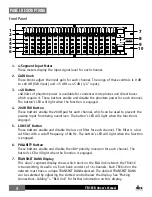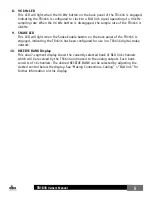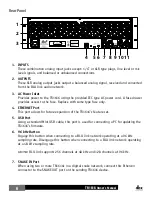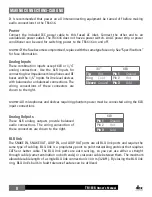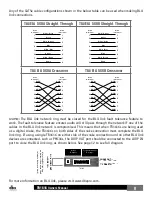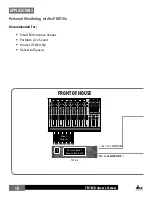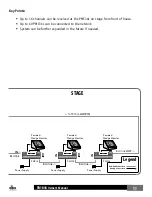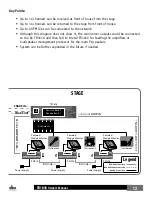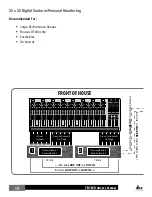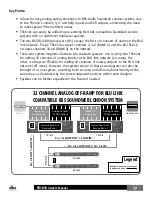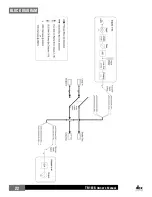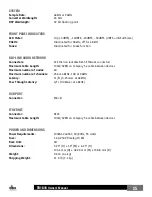
TR1616
Owner’s Manual
18
operating inStructionS
Setting BLU link Receive & Transmit Banks
To set the BLU link receive and transmit channel banks, use a small flat-head screwdriver or your
fingernail to turn the slotted controls beneath the RECEIVE BANK & TRANSMIT BANK displays.
Note:
Multiple TR1616s in a network can be assigned to the same RECEIVE BANK, if the
application requires it. However, each TR1616 on the network must have its own unique TRANSMIT
BANK selected. See “Applications” for examples of channel bank assignments.
BLU link supports 256 channels at 48 kHz and 128 channels at 96 kHz. The below table shows
which range of channels are available within each BLU link channel bank and which channels
are supported when operating at a 96 kHz sample rate.
TR1616 BLU link Bank/Channel Table
Channel Bank
Channels Available In Bank Supported Sample Rates
1
1-16
48 kHz/96 kHz
2
17-32
48 kHz/96 kHz
3
33-48
48 kHz/96 kHz
4
49-64
48 kHz/96 kHz
5
65-80
48 kHz/96 kHz
6
81-96
48 kHz/96 kHz
7
97-112
48 kHz/96 kHz
8
113-128
48 kHz/96 kHz
9
129-144
48 kHz
10
145-160
48 kHz
11
161-176
48 kHz
12
177-192
48 kHz
13
193-208
48 kHz
14
209-224
48 kHz
15
225-240
48 kHz
16
241-256
48 kHz
Note:
Setting both the TRANSMIT BANK and RECEIVE BANK to the same channel allows signal
pass-through of the analog inputs to the analog outputs. In certain applications this may be
a desirable feature. For example, if you wanted to incorporate dbx PMC16 personal monitor
controllers into your existing system using a traditional analog snake, it is possible to connect
the analog snake to a single TR1616 at the front of house position (instead of straight to the
mixing console). The TR1616 could then pass the analog signals out to the mixing console
through the XLR outputs and out to the PMC16s on stage via BLU link.

